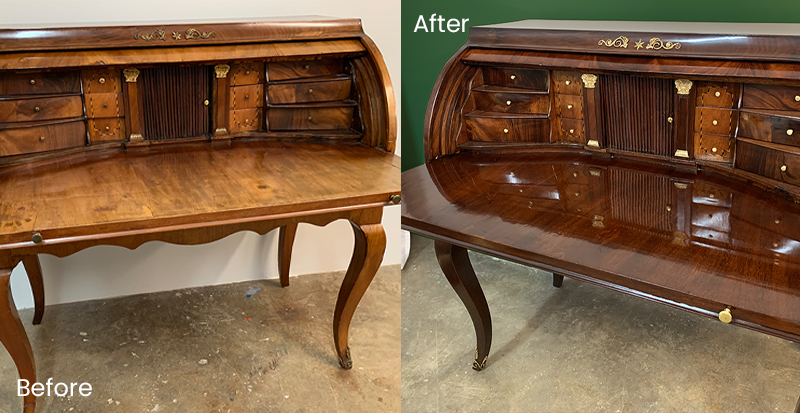Buzz Haven: Your Source for Trending Insights
Stay updated with the latest buzz in news, trends, and lifestyle.
Revive Your Relics: Furniture Restoration Secrets Revealed
Discover top secrets to breathe new life into your furniture! Unlock expert restoration tips and transform your relics into stunning treasures.
Top 5 Essential Tools for Furniture Restoration Beginners
Embarking on the journey of furniture restoration can be both exciting and rewarding, especially for beginners looking to breathe new life into old pieces. To ensure a smooth start, it's crucial to have the right tools at your disposal. Here are the top 5 essential tools every furniture restoration beginner should consider:
- Screwdriver Set: A versatile screwdriver set is essential for disassembling furniture pieces. Having both flathead and Phillips screwdrivers in various sizes will allow you to tackle any screws you encounter.
- Sander: Whether you choose a manual sanding block or an electric sander, this tool is vital for removing old finishes and preparing surfaces for refinishing.
- Paintbrushes: Quality paintbrushes come in various sizes and are important for applying stains, paints, or sealants evenly.
- Wood Glue: Strong adhesives are necessary for repairing joints and cracks. Wood glue provides a durable bond that can withstand wear over time.
- Measuring Tape: Accurate measurements are key in restoration projects. A measuring tape ensures that you get the right dimensions when cutting or fitting new pieces.

How to Identify Different Wood Types for Effective Restoration
Identifying different wood types is crucial for effective restoration, as each type has unique properties that affect both appearance and durability. Start by examining the color and grain pattern: light woods like pine are often yellowish, while darker woods such as walnut have rich brown hues. The grain texture also varies, with hardwoods typically providing a more complex pattern. You can use resources like a wood identification guide or consultation with an expert to help distinguish woods based on these visual characteristics.
Another reliable method for identifying wood types is through smell and feel. When you sand or cut wood, each type emits a distinct aroma; for instance, cedar has a fragrant scent that is easily recognizable. In addition, pay attention to the weight and hardness of the wood. Hardwoods like oak feel significantly heavier and denser compared to softer woods like fir. Keeping a sample log of various wood types you encounter can also facilitate future restorations, helping you recognize and differentiate them quickly.
Is DIY Furniture Restoration Worth It? Pros and Cons Explained
When considering DIY furniture restoration, it's essential to weigh the pros and cons. On the plus side, restoring old furniture can be a cost-effective way to achieve unique and personalized pieces that reflect your style. The process can also be a rewarding creative outlet, allowing you to develop new skills and enjoy a sense of accomplishment. Furthermore, repurposing furniture is an eco-friendly choice that encourages sustainability by minimizing waste and reducing the demand for new resources.
However, there are significant drawbacks to keep in mind as well. The restoration process can be time-consuming and may require specialized tools and materials, which could potentially add to your costs. Moreover, if you're not experienced, you might end up damaging the furniture further, leading to greater expenses or an unsatisfactory end result. Additionally, DIY furniture restoration can be physically demanding and may not always yield the expected outcomes, particularly for intricate or antique pieces. Thus, it's crucial to assess your skills and commitment before diving into a restoration project.